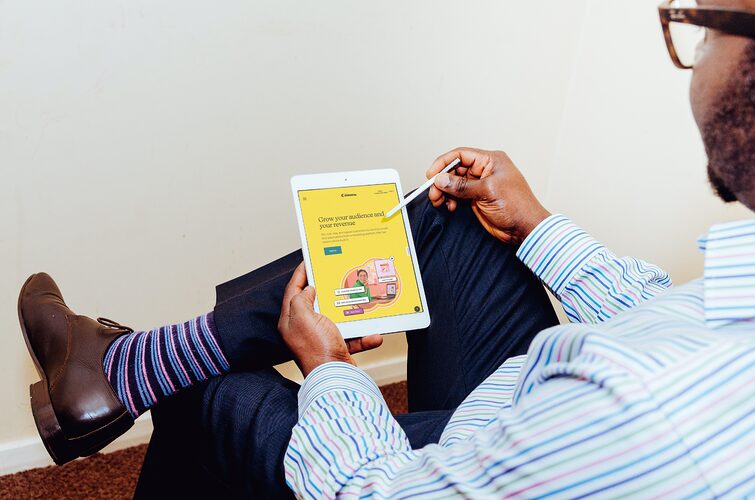Companies are facing a year marked again by uncertainty. Its activity will be conditioned by exogenous factors (change in consumer habits) and endogenous factors (the impact of technological transformation on work processes).
The explosion of artificial intelligence, in which generative models have burst, appears as a protagonist in the relationship between brands and consumers. In this context, what should those who work in the world of Marketing and Consumption pay attention to? How can you anticipate the challenges and changes that are coming? How can the irruption of generative AI models like ChatGPT affect them, for example?
LLYC’s Consumer Engagement and Deep Digital Business teams present the 10 trends that, driven by the explosion of Artificial Intelligence, will influence consumers and companies in 2023. To prepare this report, its own Trend anticipation methodology has been used. Spotting. From there, a multidisciplinary team of senior experts from LLYC selected the most relevant ones based on criteria of impact, novelty and differentiation.
On the one hand, the trends that reflect technological advances are positioned: measurement and data with trends such as generative AI, CX orchestration (zero party data, personalization and application to journeys), attribution models or the analysis of data in all instances of the strategy. On the other hand, the trends more linked to changes in consumer habits, related to spending control or the consumption of monetized content, emerge. At the same time, some of the buzzwords appear, such as the metaverse, super apps, behavioral economics or decentralized commerce.
David González Natal, Partner and global leader of Engagement at LLYC: “When the macroeconomic outlook is adverse, companies tend to reduce their investments in marketing and communication. However, everything indicates that the solution is the reverse. We are living through an explosion of technology applied to consumption. In this scenario, it seems essential to us to analyze how the intersections between the exponential development of technologies and their popularization determine what to pay attention to in order to optimize investment and continue adding value to both companies and consumers”.
“In this context, companies need to be pragmatic when facing their business challenges, and this pragmatism necessarily involves solutions that allow them to measure the impact of their decisions in both the short and long term, ensuring that their interests are aligned with those of their consumers, and that they are obtaining the precise return on investment”, says Ibo Sanz, Global Senior Director of Deep Digital Business Strategy at LLYC.
These are the 10 trends detected in the LLYC report that will mark Marketing and Consumption in 2023:
- The content revolution: Generative AI. Through Artificial Intelligence, both companies and professionals will be able to automate tasks and enter into creative processes, generating personalized developments and original content for their brands, quickly, credibly and with considerable savings in time and money.
- behavioral economics intention vs. behaviour? This discipline improves the effectiveness of business activities and helps to understand the decisions we make in our day to day. Understanding and activating these patterns is critical to bridging the gap between intention and behavior. Companies that use these practices get a higher conversion in the funnel sales, improving and expanding your transaction history.
- The fight for the monetization of content. Content creators are increasingly jealous of their autonomy with respect to social networks. Any change in their algorithms can penalize the organic reach of the content and, therefore, their income. This is the main reason why more and more decide to bet on direct subscription models, without intermediaries, taking into account the real scope that can be obtained. Segmenting the market makes it impossible to capture massive audiences, so both creators and platforms need each other. A balance that is yet to be clarified.
- Does every penny count? Attribution in purchasing decisions. The important thing when choosing the right attribution models for each campaign or business is knowledge: the customer touch points, the channels, the devices used, the objective of the campaign and the buyer person. To master this, data and AI are key.
- CX from zero party data and customization. The customer experience (CX) will continue to be the number one priority for companies in 2023. Brands will face consumers who are more connected, more digitized and informed, and much more demanding, so it is necessary to be clear about where and how to focus efforts. Personalization will be the most powerful asset to improve the CX. Consumers demand more privacy, but when connected to a brand they are willing to proactively share their data.
- High prices, low costs. The prospects for the dynamics of consumption are increasingly conservative, preparing the ground for the return of promotion hunters, in order to smooth out the household economy. For this reason, it is expected that brands will make an effort to differentiate their product/service, as well as that the price of it will be increasingly competitive compared to a more cautious consumer and attentive to household spending.
- Goodbye Big Data, hello Huge Data. Data growth is exponential. They are and will be the main asset of organizations as the center of digital transformation. However, they are only as good as the questions you ask them. If we do it from a consistent business perspective and with reliable sources of information, we will have a great competitive advantage in the sector.
- Super apps and super expectations. In 2023, the experience with the application would have to be further analyzed, creating a holistic one focused on the client that consolidates functions and forces users to integrate it into their daily lives. Thinking from the customer’s point of view will make solutions more practical and inclusive.
- The metaverse that does not arrive. Although there are still difficulties in building it and making it a long way to go to implement it, the metaverse continues to be a front-line item on the agenda for many CMOs, CIOs, and CTOs. It’s time to experiment and find new ways to use 3D virtual environments as the metaverse continues to develop over the years.
- D-commerce: Decentralized, Direct and Democratic. Today 6 large companies control 60% of global electronic commerce. The evolution of Web 3.0 and technology blockchain They will make it possible to generate a totally decentralized network in which the need for an intermediary for any transaction will be eliminated. This will allow companies to sell their products to users in a direct and personalized way, make a e-commerce more transparent, horizontal and democratic based on P2P relationships with improved security.












